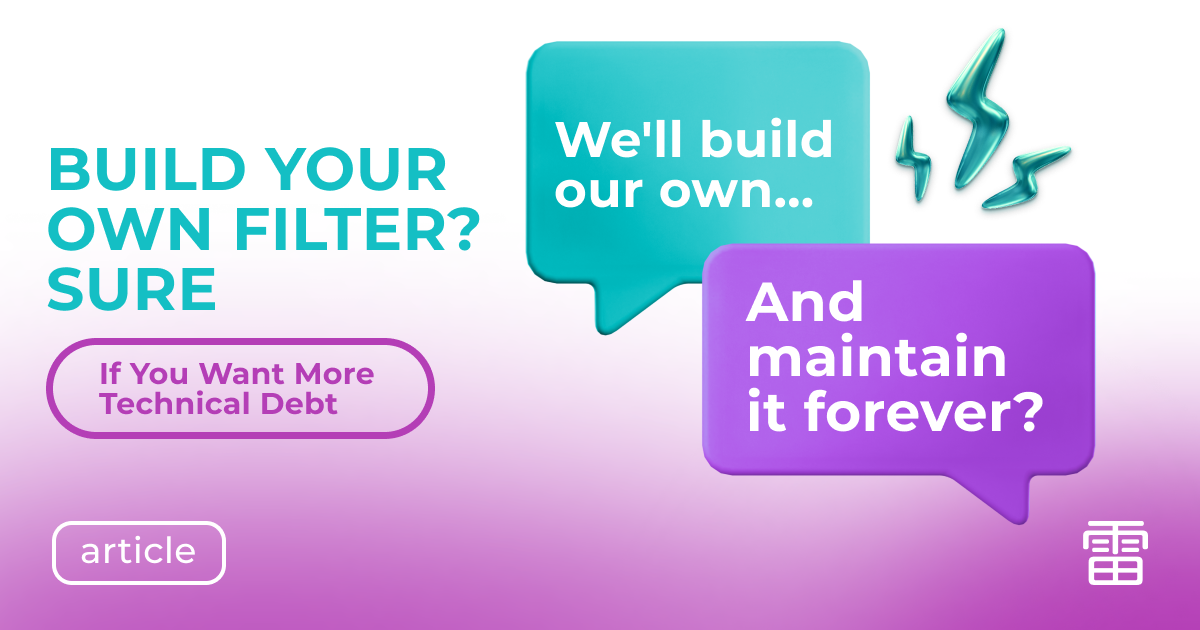In the digital advertising world, antifraud decisions are rarely made alone.
Even if the traffic buyer or account manager knows “there’s fraud here,” that’s not enough.
The decision lies with those responsible for product architecture and technical implementation: CTOs, product owners, engineers.
And this is where resistance begins.
The CTO is skeptical. The product team says: “We’ll build our own — it won’t be worse.”
And they’re not blind. But their confidence is often based on a false assessment of effort, risk, and scale.
The Kaminari Click team has systematized arguments that help shift the conversation from emotions to the language of data, processes, and architectural value.
What Holds Back the Tech Team?
“We’ll build our own filter in a couple of days”
This is the most common claim.
IP checks, regex rules, banning based on user-agents — that seems like enough at first. But:
– Fraud evolves faster than any MVP. Today it’s proxies, tomorrow it’s WebRTC evasion, the next day — human-like behavior.
– Your own filter will always lag behind. It only works on known patterns.
– Industry-grade antifraud platforms have access to far more data. Behavioral patterns, millions of suspicious IPs, anti-fingerprinting techniques — you can’t “build that up” quickly.
– Developing your own antifraud isn’t a script. It’s a product. It needs maintenance, updates, and scaling. At Kaminari, a dedicated R&D team works on this.
MVP = a temporary measure. But in production, “temporary” = technical debt by default.
“External antifraud is a black box”
For technical teams, lack of transparency = potential threat. And the concern is valid — many solutions only give a binary “bad click” label with no explanation.
At Kaminari Click, we offer a different approach:
– Every decision comes with a reason. Block reasons are logged.
– Access to raw data: IP, behavioral profile, fingerprint.
– Flexible configuration and whitebox integration: antifraud adapts to your business logic.
This isn’t a black box. It’s a toolkit — and you connect it on your terms.
“Fraud filtering will slow down redirects”
One of the most persistent myths. In practice:
– System response time: under 200-500 ms
– Filtering works in parallel or server-side
– Fully supports pre-redirect flow, no delay for users
A properly implemented antifraud integration doesn’t impact UX.
What Arguments Actually Work With Tech Teams
If you’re talking to a CTO, forget “traffic quality” and “budget leak.”
Speak their language: load, architecture, transparency, support, scalability.
1. Infrastructure benefits
– No need to build and maintain your own antifraud system
– DevOps team stays focused — no distraction for support and monitoring
– No need to manually review filtering logic each month
– SLAs for accuracy and processing speed — handled by the vendor
2. Architectural transparency
– Supports multiple modes: recommendation or blocking
– REST API, callback, flat files — integrates easily into any workflow
– Filter logic can be fully customized per project needs
3. Reducing technical debt
– Your antifraud = code that will need updates
– Ours = a service that updates daily, independently
The CTO sees: outsourced antifraud is cheaper and lower risk in the long term
Why “Your Own Antifraud” Isn’t an Alternative — Just a Temporary Fix
As complexity and volume grow — in-house losses on both economy and flexibility.
How to Argue for Antifraud Inside the Team
1. Data
Show reports:
– suspicious click volume,
– shady domains,
– zero-conversion traffic,
– advertiser chargebacks
2. Risks
– Loss of partner trust
– Skewed analytics and metrics
– Extra load on servers
3. A/B Test
Best argument = proof.
Kaminari offers a free test for 100k checks.
The tech team sees the metrics themselves — no selling needed.
Why the CTO Says “Yes”
They see:
- An integration they can control
- A clear architecture that fits their stack
- A supported system, not a one-off script
- A tool for BI and reporting
And it stops being “a wish from the traffic team.”
It becomes part of the infrastructure stack.
Antifraud is a DevOps decision — not a marketing tool.
What You Can Do Right Now
If:
– You suspect fraud,
– Metrics are dropping,
– Tech support is overwhelmed,
– The team has no consensus — we can start a test, risk-free.
What Kaminari Click offers:
- A/B test for 100k checks
- Fast integration (JS, redirect)
- Reports with event-level breakdowns
- Analytics integration
- Support at every step
Need a real antifraud solution?
Test how antifraud impacts your funnel — with data, not assumptions.
Book a demo with our manager and launch a free test with Kaminari Click.
Give your team real arguments, not guesses.

